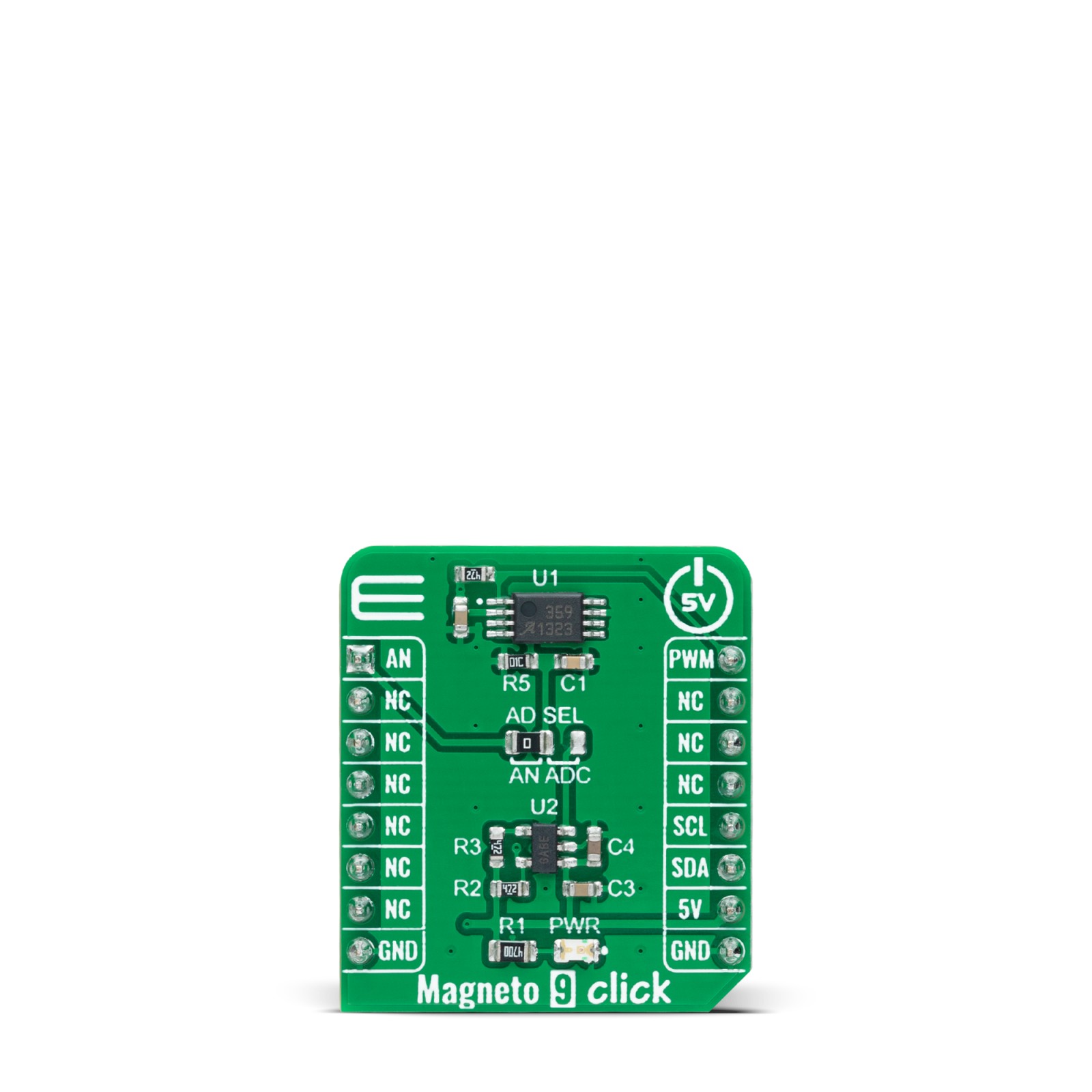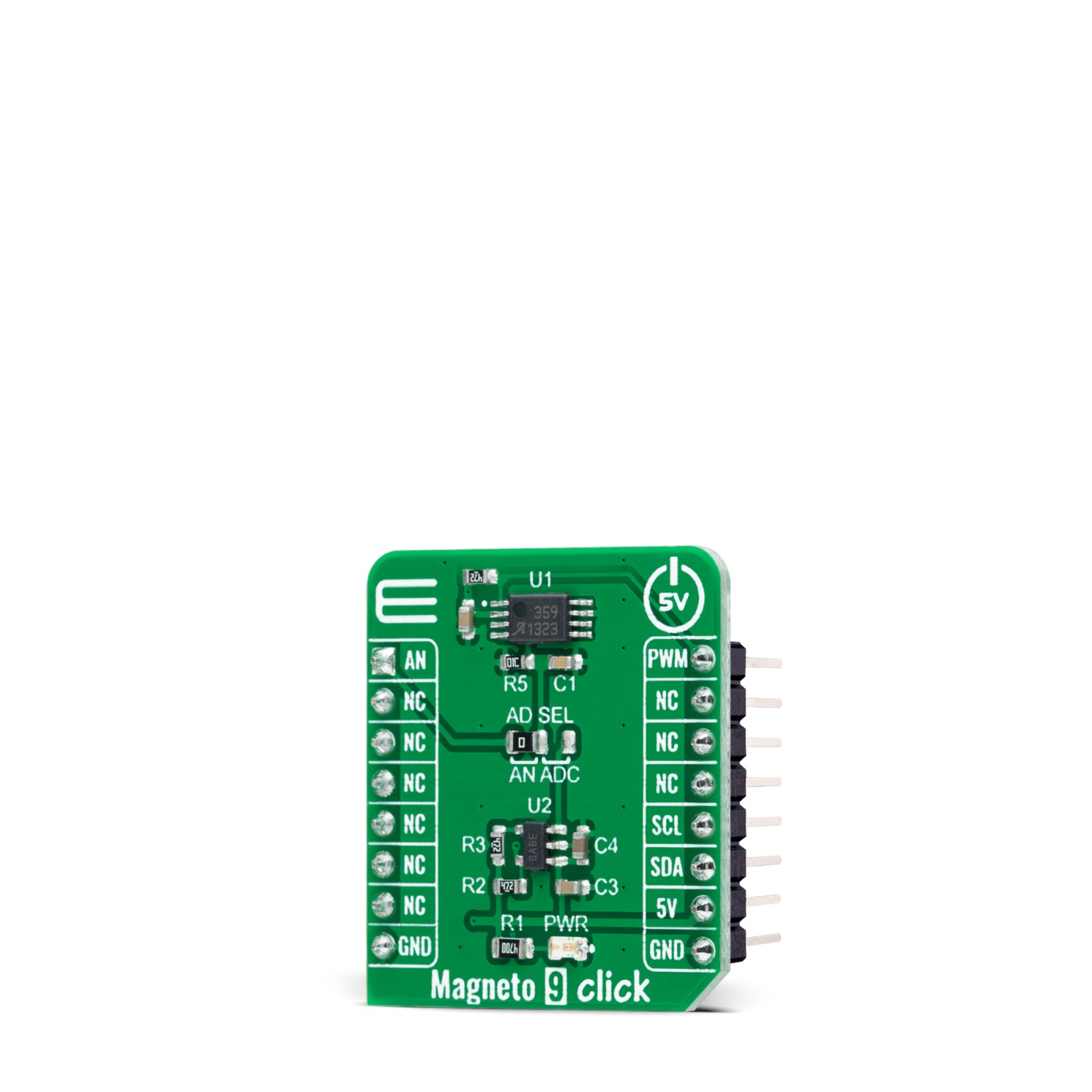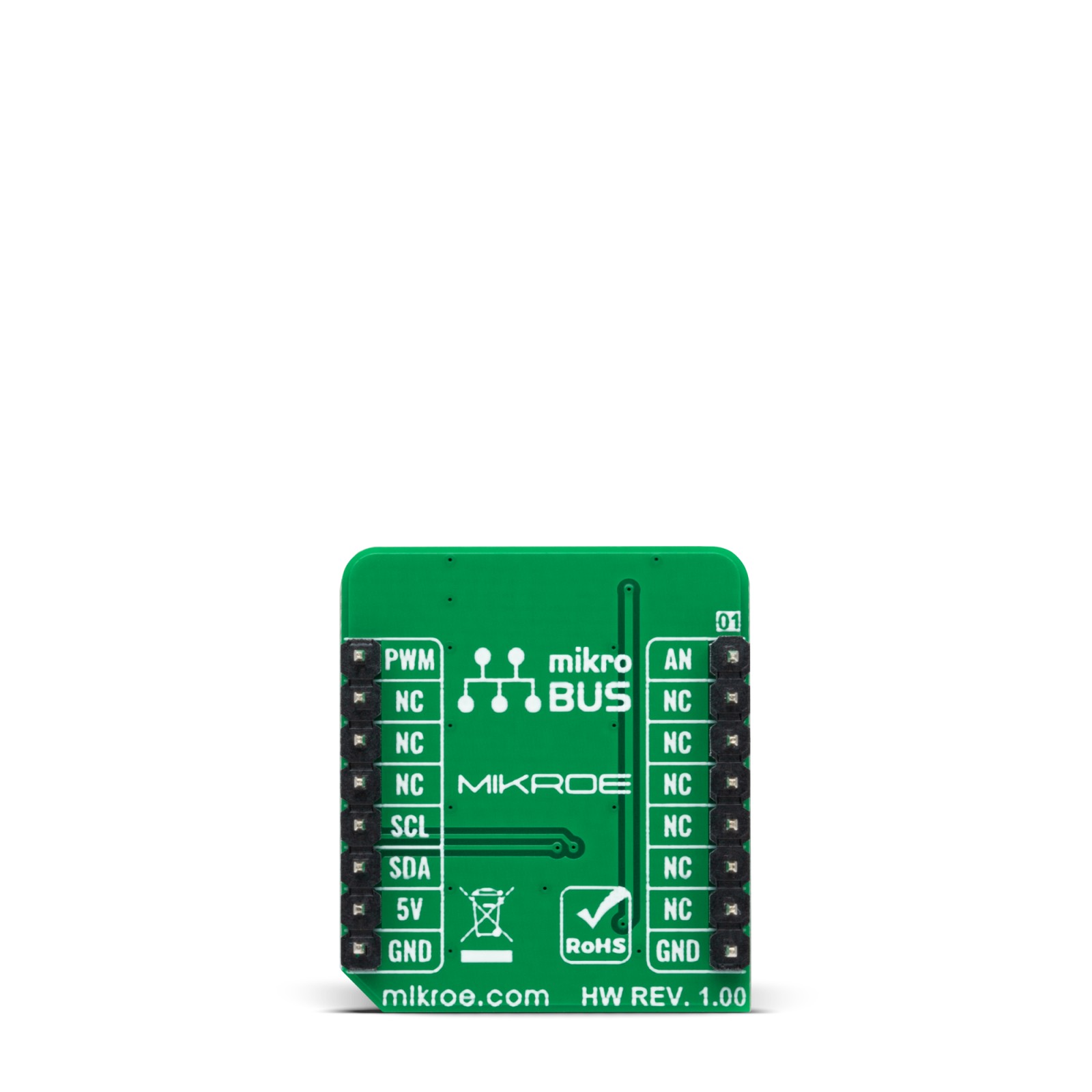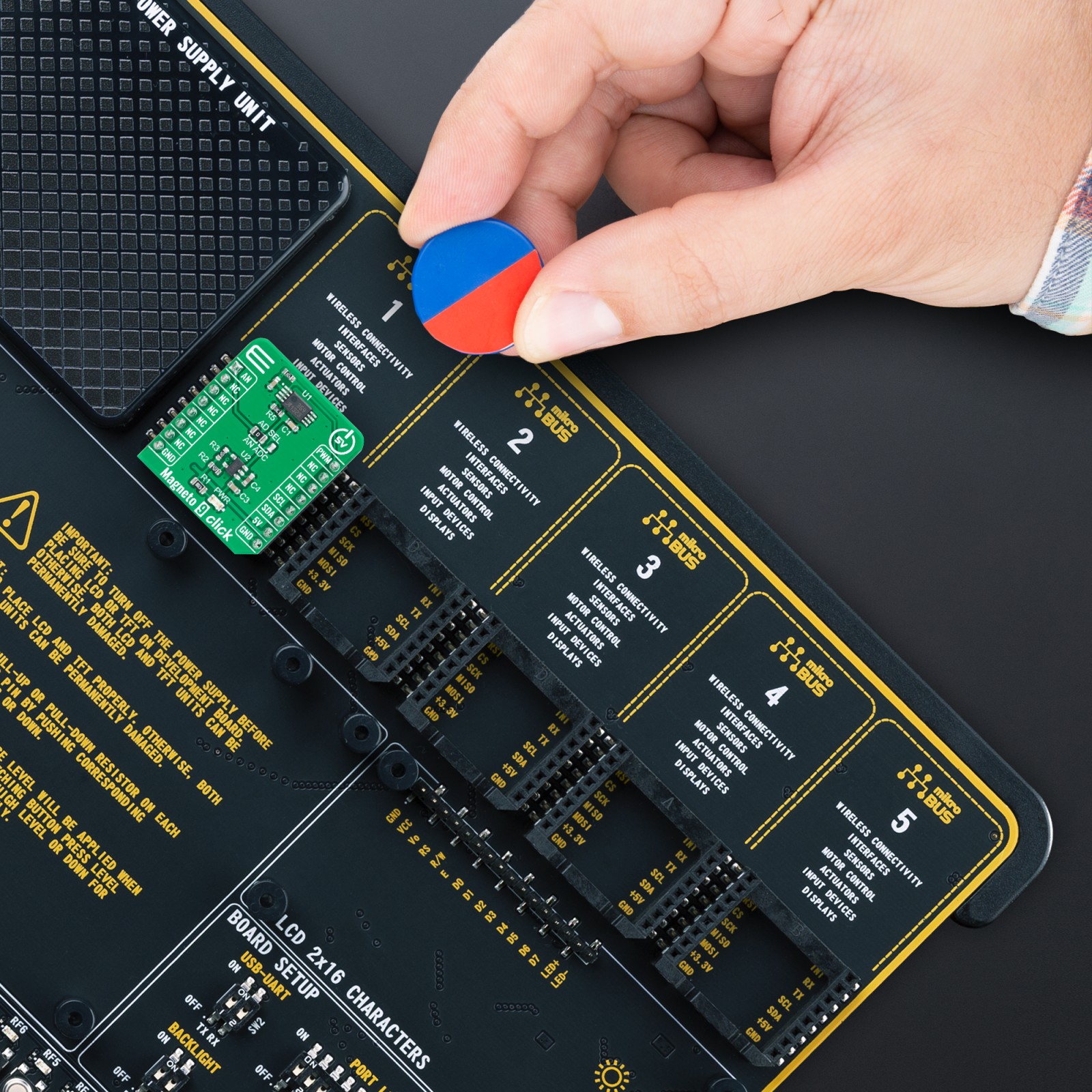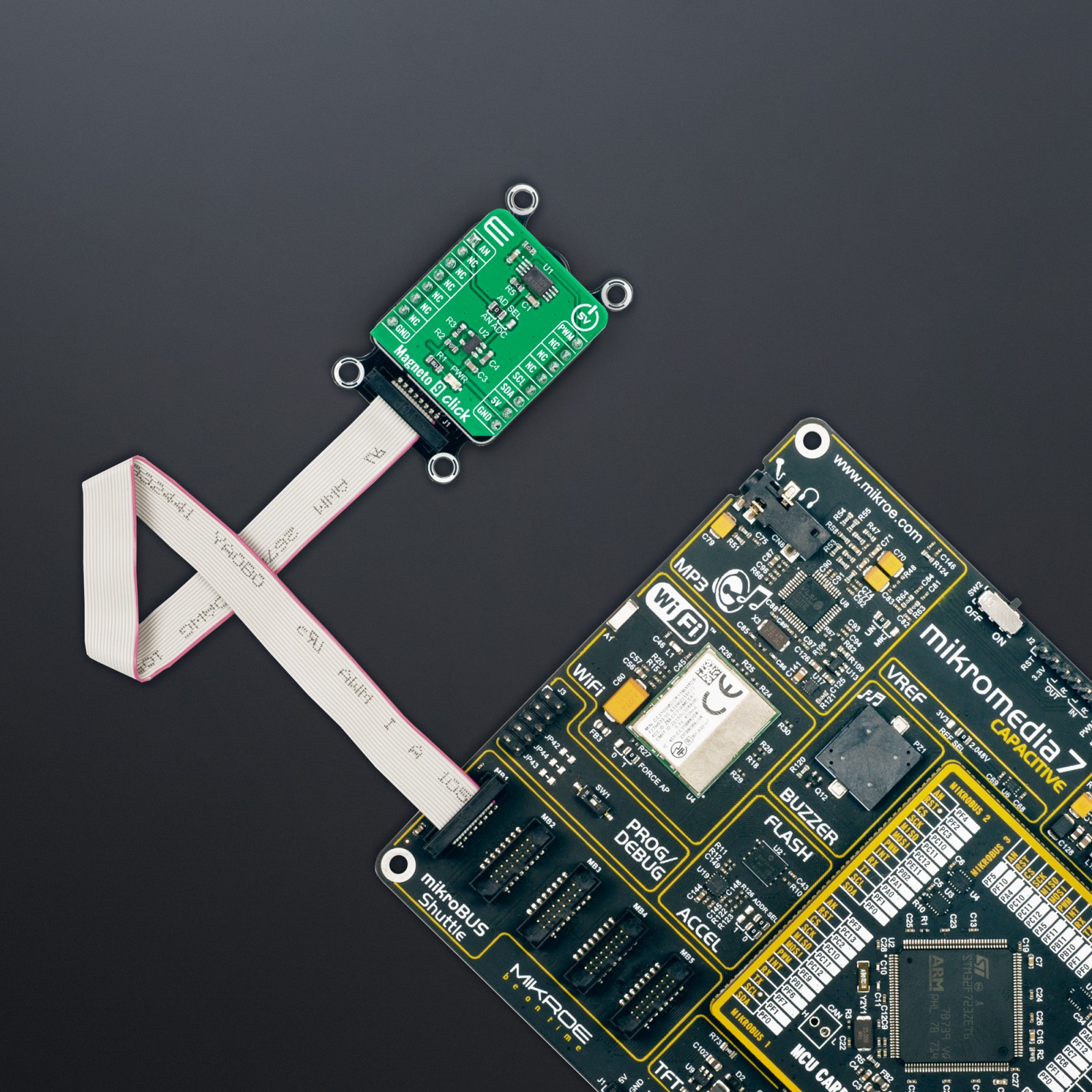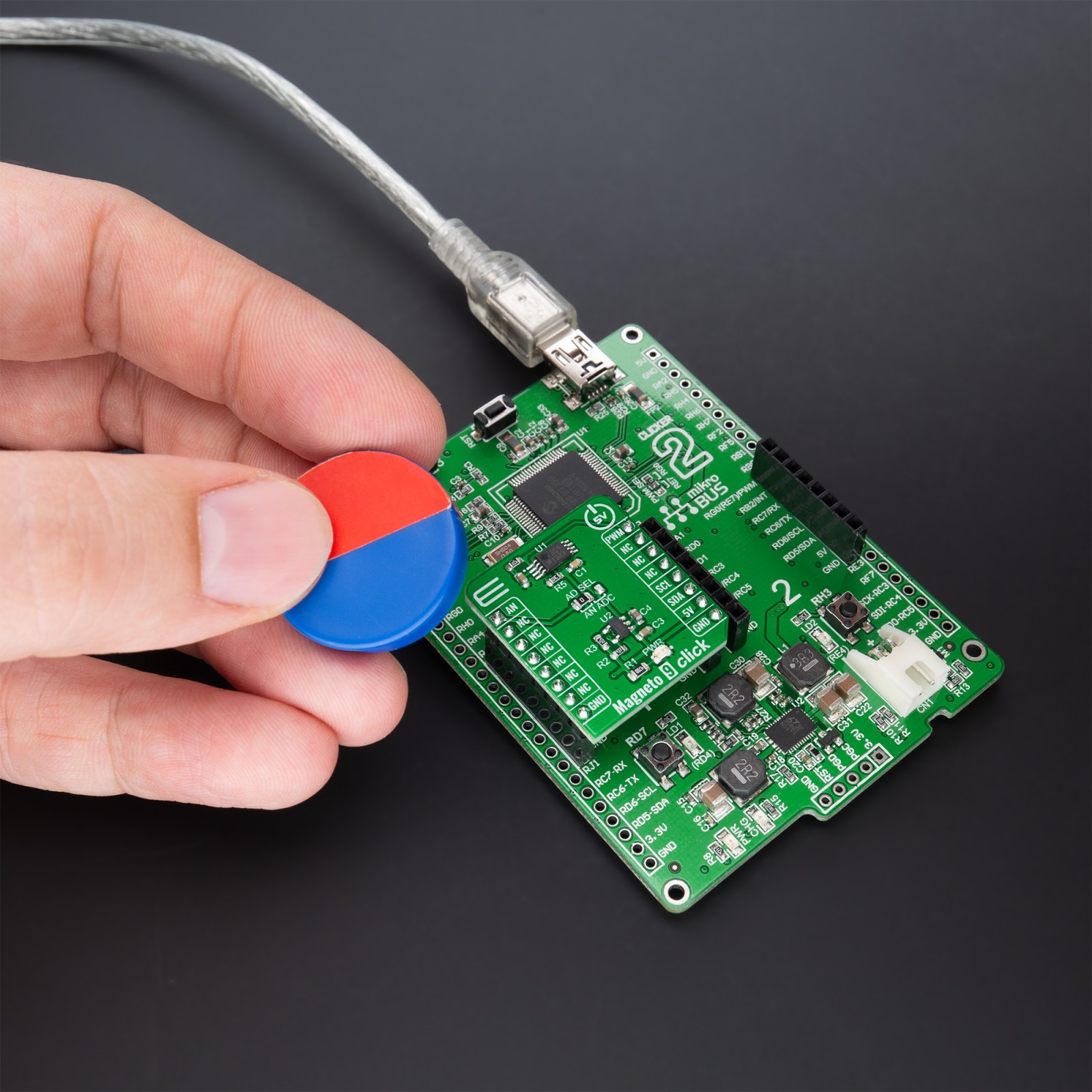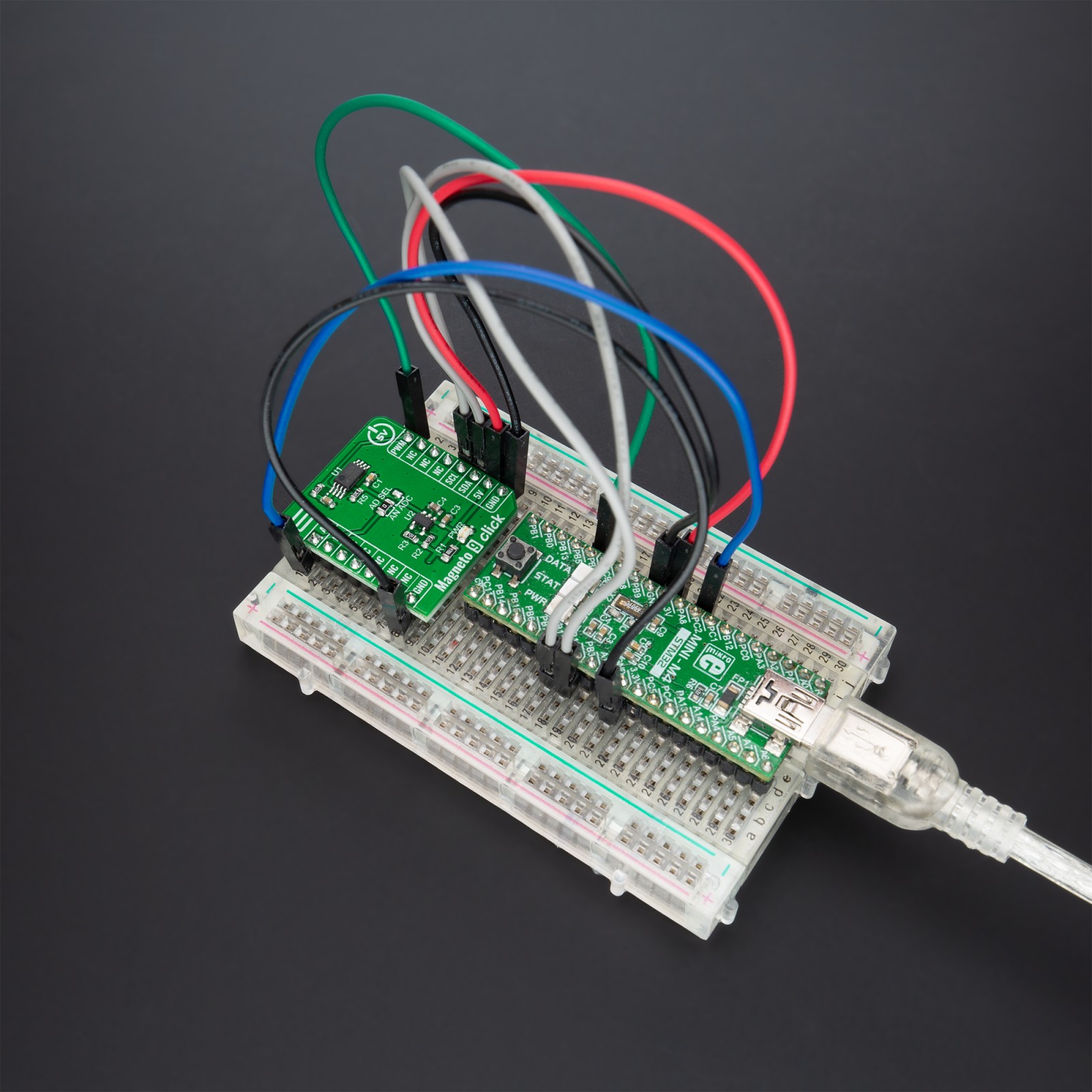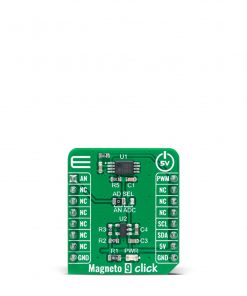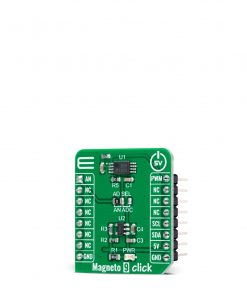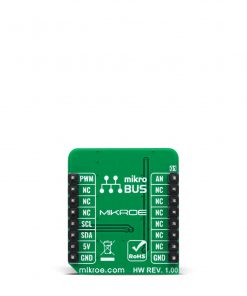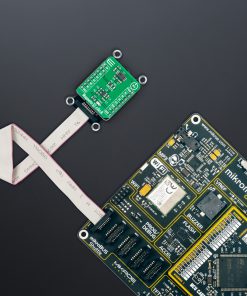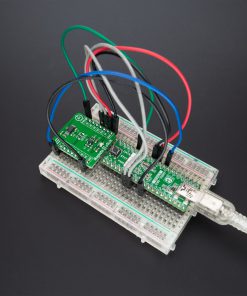Subtotal: R715.00
Magneto 9 Click
R425.00 ex. VAT
Magneto 9 Click is a compact add-on board that contains a low-power, accurate, and reliable magnetic sensing device. This board features the A1359, dual tracking output linear hall-effect sensor from Allegro MicroSystems. This ratiometric Hall-effect sensor provides an analog voltage and a PWM signal with a duty cycle proportional to the applied magnetic field. It comes with factory-programmed offset, sensitivity, and polarity, where the PWM output tracks the analog output to within a +/-3% mismatch. This Click board™ is the most suitable for use in automotive and industrial applications such as displacement and angular position, which requires high accuracy in conjunction with redundant outputs.
Magneto 9 Click is supported by a mikroSDK compliant library, which includes functions that simplify software development. This Click board™ comes as a fully tested product, ready to be used on a system equipped with the mikroBUS™ socket.
Stock: Lead-time applicable.
| 5+ | R403.75 |
| 10+ | R382.50 |
| 15+ | R361.25 |
| 20+ | R347.65 |

 RTC Click
RTC Click  LPG Click
LPG Click 